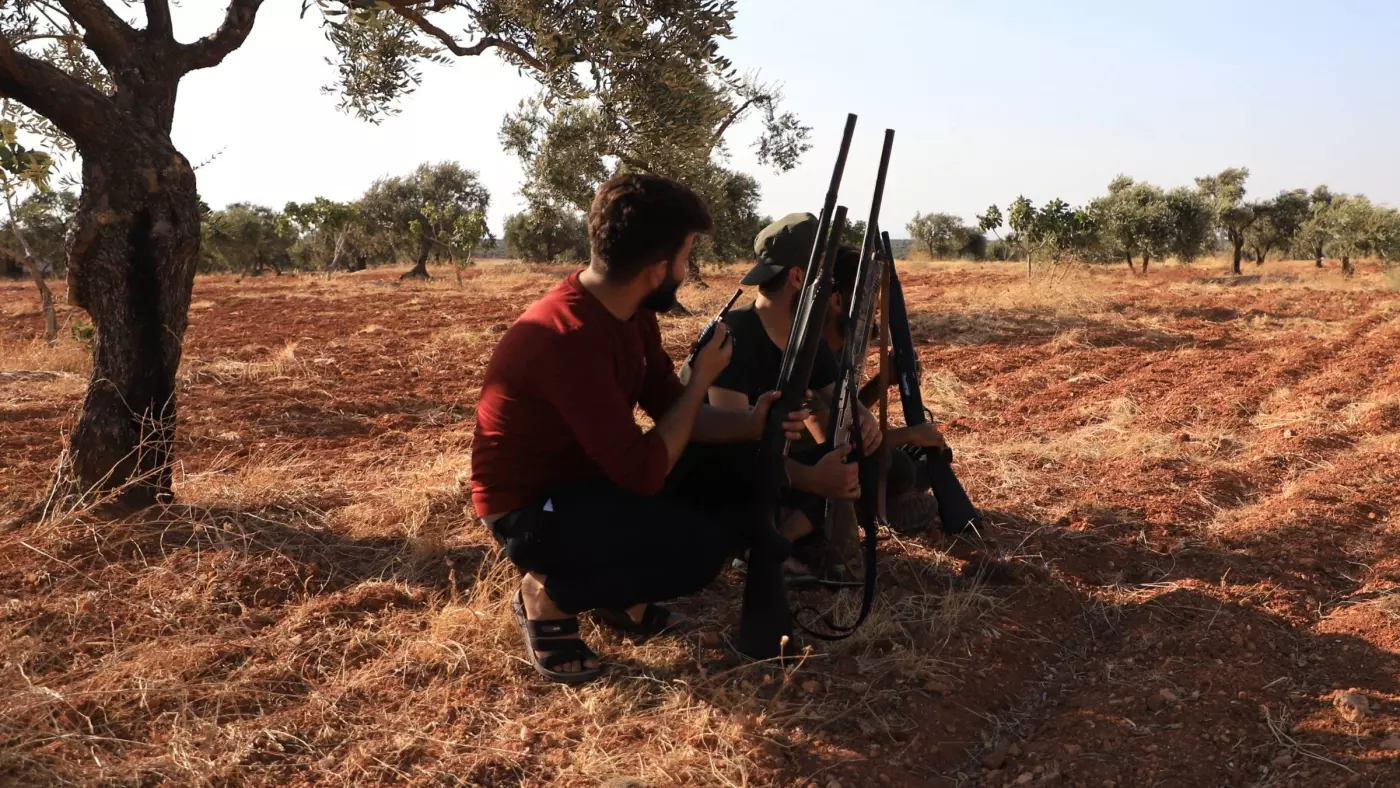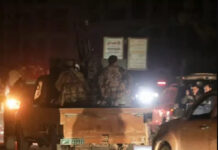
The use of first-person view (FPV) drones, colloquially known as “suicide” or “kamikaze” drones, has become a significant aspect of modern warfare in northern Syria. This technology, previously employed by the Russian-backed Assad regime, is now being adopted by the Turkish-backed Syrian National Army (SNA), marking a new phase in the conflict.
Last Tuesday, August 20, the SNA showcased its use of FPV drones for the first time in a training exercise. The Ministry of Defense of the Turkish-backed Syrian Interim Government (SIG) shared photos on its social media platforms, revealing a live ammunition training session by the 22nd and 28th divisions of the Second Corps, which are part of the Turkish-backed SNA. The exercise “simulated the liberation of enemy-held sites and included combat maneuvers with armored vehicles, drone operations, and battlefield evacuation drills.” Notably, the 105th Victory Flag Unit of the Sultan Murad Division, closely aligned with Turkey, played a central role in this training.
This development is significant as it marks the first time forces associated with the revolution have openly employed FPV drones, a technology that had been exclusively used by the Assad regime and its allies. FPV drones, controlled through real-time video transmission, allow operators to maneuver drones as if they were piloting them in person. This technology, while initially developed for civilian purposes like sports racing, has been adapted for military use, particularly in the Ukraine-Russia conflict, where it has proven capable of destroying expensive military equipment with relatively low-cost drones.
The Assad regime has intensified its use of FPV drones since late 2023, launching numerous attacks on the liberated areas in northwestern Syria. These drones have primarily targeted civilian sites, causing widespread destruction and terror among the local population. The UK-based Syrian Observatory for Human Rights (SOHR) reported that in the first four months of this year alone, there were 60 suicide drone attacks on 21 villages, resulting in 11 deaths and 32 injuries.
While the SNA is exploring the utilization of this military technology, civilians near the front lines have been left to employ their own options of countermeasures in the face of a seemingly ceaseless onslaught of FPV drone attacks by Assad and his allies. Such as in Al-Nayrab where residents have taken desperate measures to protect themselves. Abdul-Rahman al-Muhammad told the MEE how villagers use hunting rifles to shoot down incoming drones. “We used to hunt rabbits and birds, but now we protect our homes from drones,” he said. The regime’s drone attacks have devastated the area, destroying civilian vehicles, homes, and vital infrastructure.
The toll of these drone attacks on civilians has been severe. The Syrian Civil Defense, also known as the White Helmets, documented 44 attacks in the first quarter of this year. These strikes have targeted moving vehicles, including ambulances and civilian cars, causing widespread fear and displacement.
According to Hassan al-Hassan, a director within the White Helmets, over 70,000 people, including 22,000 displaced individuals, are at risk due to the escalating drone attacks. As the use of FPV drones becomes more widespread, the need for effective countermeasures and international attention to the humanitarian crisis in Syria grows ever more urgent.








